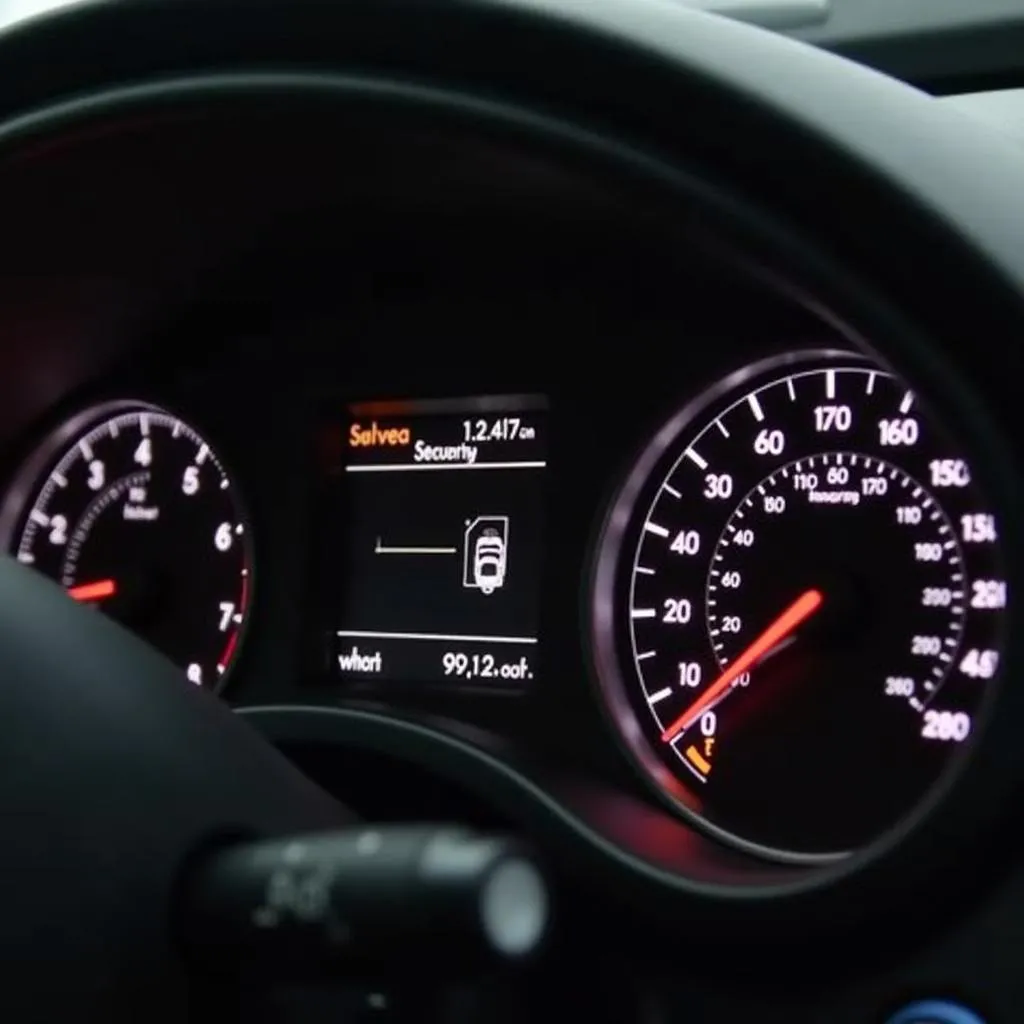You’re driving your Range Rover, and everything seems fine until you notice it: the brake pad warning light is on. It’s a nagging reminder that something might be wrong with your braking system, and ignoring it is never a good idea. While it might seem like a minor annoyance, a glowing brake pad warning light can indicate a range of issues, from worn-out brake pads to more serious problems. This comprehensive guide explores the common causes of a persistent brake pad warning light on Range Rovers and provides practical solutions to help you get back on the road safely.
Understanding Your Range Rover’s Brake Pad Warning System
Your Range Rover’s brake pad warning light is part of a sophisticated system designed to alert you about potential issues with your brakes. It usually illuminates when the brake pad thickness reaches a critically low level, indicating it’s time for a replacement.
The system primarily relies on sensors, typically located within the brake pads themselves. These sensors work by completing an electrical circuit. As the brake pads wear down, the sensors are exposed and come into contact with the brake rotor, closing the circuit and triggering the warning light on your dashboard.
Common Causes of a Persistent Brake Pad Warning Light
While worn brake pads are the most frequent culprit, several other factors can cause the warning light to stay on. These include:
-
Worn Brake Pads: This is the most common cause. As the friction material wears down, it eventually exposes the brake pad wear sensor, triggering the warning light.
-
Faulty Brake Pad Sensors: Like any electrical component, brake pad sensors can malfunction. A broken wire, corrosion, or general wear and tear can disrupt the sensor’s ability to function correctly, leading to a false warning light.
-
Low Brake Fluid Level: Brake fluid is the lifeblood of your Range Rover’s braking system. If the brake fluid level drops too low, it can trigger the brake pad warning light as a safety precaution. This could indicate a leak in the system, which requires immediate attention.
-
Issues with the Brake Caliper: The brake caliper houses the brake pads and pistons. A sticking caliper piston or a malfunctioning caliper can cause uneven brake pad wear or prevent the pads from retracting fully, potentially triggering the warning light.
-
Problems with the ABS System: While less common, issues with your Range Rover’s Anti-lock Braking System (ABS) can also trigger the brake pad warning light. The ABS system relies on various sensors and modules, and a fault in any of these components could illuminate the warning light.
 Range Rover Brake Pad Wear Sensor
Range Rover Brake Pad Wear Sensor
Troubleshooting the Brake Pad Warning Light
Before you rush to the mechanic, there are a few troubleshooting steps you can take to identify the root cause of the problem:
-
Check Your Brake Pads: Begin by visually inspecting your brake pads. If you see less than ¼ inch of friction material remaining, it’s time for a replacement.
-
Inspect the Brake Pad Sensors: Carefully examine the brake pad wear sensors for any signs of damage, such as broken wires or corrosion. If you find any damage, the sensor will need to be replaced.
-
Check the Brake Fluid Level: Locate the brake fluid reservoir under the hood of your Range Rover. Ensure the fluid level is between the minimum and maximum markers. If the fluid is low, add the recommended brake fluid type for your Range Rover model.
-
Look for Brake Fluid Leaks: A drop in brake fluid level could indicate a leak. Inspect the area around the brake lines, calipers, and master cylinder for any signs of fluid leakage. If you detect a leak, it’s crucial to have it addressed by a qualified mechanic immediately.
When to Seek Professional Help
If your brake pad warning light remains on despite checking the above, it’s time to consult with a qualified mechanic specializing in Range Rover vehicles. They have the expertise, tools, and diagnostic equipment to accurately diagnose and address the issue. Attempting to fix complex brake problems yourself can be dangerous and lead to further damage.
Expert Insights from John Miller, Range Rover Specialist
“Many Range Rover owners overlook the importance of regular brake system inspections,” says John Miller, a certified Range Rover mechanic with over 20 years of experience. “The frequency of brake pad replacement depends on driving habits and conditions, but it’s always best to have them checked at least once a year or every 10,000 – 12,000 miles. Early detection and proactive maintenance can prevent costly repairs and ensure optimal braking performance.”
Conclusion
Ignoring a persistent brake pad warning light on your Range Rover is never a risk worth taking. By understanding the common causes and solutions outlined in this guide, you can address the issue promptly and ensure your safety on the road. Remember, regular brake system maintenance and timely repairs are essential for optimal braking performance and peace of mind. If you’re ever unsure about your Range Rover’s braking system, don’t hesitate to consult with a qualified mechanic specializing in these vehicles. They can provide expert advice, diagnose complex problems, and help keep your Range Rover running smoothly for miles to come.

